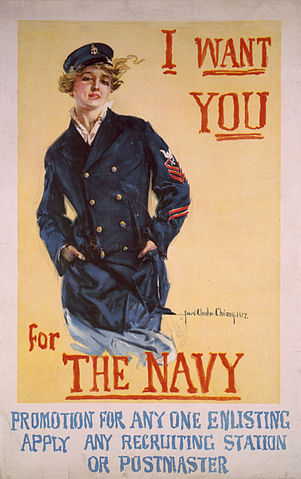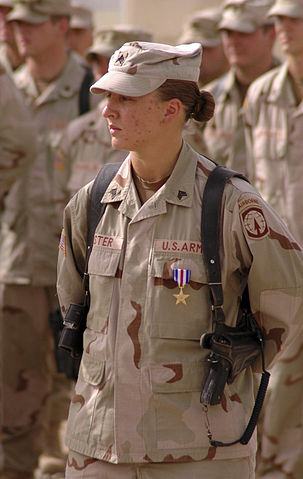A History of Women in the U.S. Military

From Continental Army Soldier Deborah Samson to the first female Army Rangers, Capt. Kristen Griest
and 1st Lt. Shaye Haver, American women have been serving in the U.S. Military for hundreds of years.
Women have been a part of the war effort since the Revolutionary War, but in the early days of our nation they had to cloak themselves in disguise to serve alongside men. When they were accepted into the military, women were given auxiliary roles. As the weapons and methods of warfare changed in the late 20th century, however, the Pentagon began to realize that gender matters less on the battlefield. The First Female U.S. SoldiersDuring the Revolutionary, Civil and Mexican Wars, a small number of women were involved in combat, but they had to disguise themselves as men and enlist under aliases. Deborah Samson Gannett, from Plymouth, Massachusetts, was one of the first American woman soldiers. In 1782, she enlisted under the name of her deceased brother, Robert Shurtleff Samson. For 17 months, Samson served in the Continental Army during the Revolutionary War. She was wounded twice. She cut a musket ball out of her own thigh so a doctor wouldn't find out she was a woman. Years later, in 1804, Samson was awarded a pension for her service. Also during the Revolution War, in 1776, Margaret Corbin fought alongside her husband and 600 American soldiers as they defended Fort Washington, New York. In the Mexican War, Elizabeth C. Newcume dressed in male attire and joined the military at Fort Leavenworth, Kansas. In 1847, she battled Native Americans in Dodge City. Ten months later, she was discharged when her gender was discovered. In July 1848, however, Congress paid her the land and money she was owed for her service. In the Civil War, several women disguised themselves as men to enlist and fight for the Union. Sarah Rosetta Wakeman enlisted as Private Lyons Wakeman. She died during the war in New Orleans at the Marine General Hospital. At the time of her death, her true gender was not known. In fact, her headstone reads Lyons Wakeman. U.S. Women in the World WarsDuring World War I, the U.S. Navy and Marine Corps allowed women to enlist. More than 12,000 enlisted and about 400 died during the war. Women also worked for the American Red Cross and the United Service Organizations, as well as in factory, office, transportation, and other jobs vacated by men who were off at war. By the end of World War I, women made up 24% of aviation plant workers. In World War II, a total of 350,000 women served in the U.S. military. More than 60,000 women served as Army nurses and over 14,000 served as Navy nurses. Even though they were far from combat, 67 Army nurses were captured in the Philippines by the Japanese in 1942. They were held as POWs for almost three years. Over a dozen Navy nurses were also captured by the Japanese during the war. Also in 1942, the Army created the Women's Army Auxiliary Corps (WAAC). A year later, the WAAC became the Women's Army Corps (WAC), in which more than 150,000 women served. For the rest of the War, WACs were present in England, France, Australia, New Guinea, and the Philippines. During World War II, the Navy, Marines and Coast Guard also established reserves for women. The Navy began Women Accepted for Volunteer Emergency Service (WAVES) in 1942. More than 84,000 WAVES worked in administrative, medical, and communication jobs. The Coast Guard set up a women's reserve, in 1942, called SPARS, meaning Semper Paratus / Always Ready. A year later, the Marine Corps Women's Reserve began. Most Marine women served stateside and by the end of the war, 85% of the personnel at the U.S. Marine Corps Headquarters were women. These reserves were created so that more men could go fight overseas. Also in 1943, the Air Force created Women Air Force Service Pilots (WASP). WASPs were civilians who flew stateside while male pilots served overseas. American aviator Jacqueline Cochran was instrumental in the creation of WASP. She wrote letters to various military leaders, suggesting that women pilots fly non-combat missions. She became the WASP director. In addition to these reserves, almost three million women worked to support the war effort at various factory, office and aviation jobs in the United States. During this time, Rosie the Riveter became a cultural icon, representing all the American women who worked for the war effort on the home front. Women's Role in War Changes in Late 20th CenturyWomen continued to break new ground in the U.S. military after WWII. Part of the reason for this was necessity. The way wars were fought changed over the 20th century. Due to modern weapons of warfare, such as scud missiles and roadside bombs, front lines were blurred and every soldier was at risk. Over 40,000 women served in the 1991 Gulf War and engaged with enemy forces on an unprecedented level. On September 5, 1990, the U.S.S. Acadia left San Diego for the Persian Gulf. Of the 1,260 on board, 360 were women. It was the first time American men and women shipped out together in wartime conditions. The 1991 Gulf War was also the first war where women served with men in integrated units within a warzone. However, women in the military suffered a setback in 1994 when Defense Secretary Les Aspin implemented a rule that prohibited women from serving in units "whose primary mission is to engage in direct ground combat." Despite the 1994 rule, women continued to play more active roles in the wars in Iraq and Afghanistan. In 2005, Leigh Ann Hester became the first female soldier to receive the Silver Star for exceptional valor in close–quarters combat. Serving in Iraq, Hester led her team in a 25-minute firefight. She used hand grenades and an M203 grenade launcher while maneuvering her team to cut off the enemy. In 2008, Monica Lin Brown also received the Silver Star. After a roadside bomb was detonated in Afghanistan, Brown protected wounded soldiers with her own body and ran through gunfire to save their lives. Women in the U.S. Military TodayAs of 2015, women make up about 15% of the U.S. military. More than 165,000 women are enlisted and active in the armed services with over 35,000 additional women serving as officers. In February 2012, after a yearlong review, the Pentagon announced women would be permanently assigned to battalions. In these ground units, women would be assigned to such critical jobs as radio operators, medics, and tank mechanics. However, many women have already served in those jobs, in temporary status, due to demand in Iraq and Afghanistan. The Pentagon's new ruling only made these job assignments official and still upheld the ban on women serving in combat tank units, Special Operations commando units and the infantry. Regarding the policy shift, Anu Bhagwati, Service Women's Action Network director, urged, "It's time military leadership establish the same level playing field to qualified women to enter the infantry, special forces, and other all-male units." That playing field was leveled in January 2013, when Defense Secretary Leon Panetta announced that the ban on women serving in combat roles would be lifted. In a Jan. 9 letter to Panetta urging the change Joint Chiefs of Staff Chairman Gen. Martin Dempsey said, "The time has come to rescind the direct combat exclusion rule for women and to eliminate all unnecessary gender-based barriers to service." The move reversed the 1994 rule that prohibited women from serving in combat. The change would be gradual; some positions would be available to women immediately, but each branch of the military has until 2016 to request exceptions to the new rule. In fact, the first female soldiers to complete the grueling Army Ranger School will not be allowed to serve with the 75th Ranger Regiment because it hasn't yet lifted its ban on female soldiers. Capt. Kristen Griest and 1st Lt. Shaye Haver made history by becoming the first two women to graduate from the Army Ranger School, along with 94 other students, in August 2015. They graduated in the first year that the Army opened the course to women. About 2015's course, Secretary of the Army John M. McHugh said in a statement, "This course has proven that every Soldier, regardless of gender, can achieve his or her full potential." On Dec. 3, 2015, the Pentagon announces that all combat jobs would be open to women. In a press conference, Defense Secretary Ashton Carter said that "there will be no exceptions" to the new rule. The historic announcement overrides the 1994 rule made by the Pentagon that restricted women from combat roles such as infantry, artillery, and armor. That 1994 rule had remained in place despite the fact that women were often in combat during the conflicts in Iraq and Afghanistan in recent years. Source: U.S. Department of Defense, U.S. Army, U.S. Navy, U.S. Marine Corps, U.S. Coast Guard, militarywoman.org by Jennie Wood |









